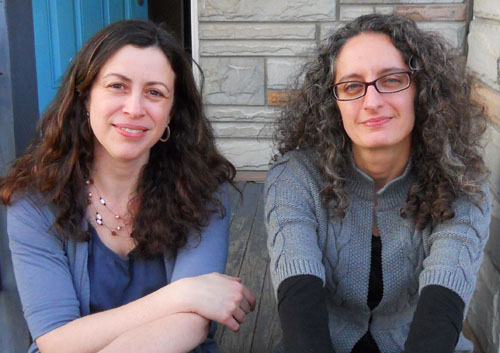
Know any fairy tales? You probably do, because as U of G English professor Jennifer Schacker says, “It’s hard to find anyone who doesn’t know at least a few. They’ve been part of our culture for hundreds of years.”
This year, in fact, is the 200th anniversary of the German collection we now know as the Grimms’ fairy tales. Over a span of 40 years and several editions, brothers Jacob and Wilhelm Grimm changed many of the tales (sometimes significantly), but the book they published in 1812 marks, as Schacker puts it, a major moment in fairy tale history.
Fairy tales are enjoying a renewed popularity today, both in children’s versions (such as Disney’s recent Tangled movie, which retells the story of Rapunzel) and in darker, adult-focused versions such as the TV show Grimm. The interdisciplinary field known as fairy-tale studies is also undergoing major paradigm shifts – ones Schacker is working to bring to the attention of scholars and students alike.
It’s perhaps fitting that during this anniversary year, Schacker is collaborating with Christine Jones of the University of Utah, teaching ENGL*3960 (Guelph) and FRENCH 4620 (Utah), respectively, and bringing new insights to the understanding of the genre.
Schacker’s seminar at U of G is a survey of fairy tales, covering their history and influence on English literature; Jones usually focuses on French women who wrote fairy tales in the 1690s, such as Mademoiselle L’Héritier, Madame de Murat and Madame d’Aulnoy, but this year is putting more emphasis on Charles Perrault, the more celebrated French fairy tale author from that period.
“They are two quite different courses, but three times a semester we have online discussions with students in both classes, based on having read the same materials,” explains Schacker. “It expands the learning community and gives them a chance to talk with people from different backgrounds with different perspectives, and I think that is very healthy in intellectual terms.”
Jones adds: “This conversation out of class is what makes the material vital. They jump into dialogue, responding and building on each others’ points, and really discuss the questions that matter to them.”
Their collaboration started with a major new anthology they co-edited, having commissioned 15 specialists to write new essays about the genre and including new translations of older versions. “We want to give people new ways to look at the stories, going beyond the tried and true,” says Jones. Marvelous Transformations: An Anthology of Fairy Tales and Contemporary Critical Perspectives will be released by Broadview Press this fall.
One question Schacker covers in her classes: what is a fairy tale, anyway? The name, Schacker explains, is a translation of a phrase used by Madame d’Aulnoy: “contes des fees.” In England, such stories were also called popular tales, nursery stories and fireside tales. Most contain magic, most happen in an unidentified location (“a country far, far away”) and most have happy endings. But not all fit the rules, Schacker adds. “Some of the most interesting texts subvert our expectations.”
While celebrating the Grimms’ accomplishments, Schacker points out that these early publications in the history of folklore also promoted a particular way of thinking about fairy tales. “They were part of a nationalist agenda,” she says. “And the Grimms’ model spawned field-based collecting efforts around the world, each seeking insight to national character. Often these early folklorists overlooked the details about specific tellers and tellings – what we would now think of as the social uses of tales.”
Jones says that from a historical literary perspective, rediscovering early versions of some stories can be quite revealing. For example, she is now re-translating Perrault’s version of Sleeping Beauty, “La belle au bois dormant.” In the well-known Disney version, the sleeping Princess Aurora is woken by a kiss from the Prince. “In that version, the princess is comatose and passive, awaiting the prince’s kiss – a sign of his power over her – to waken her,” says Jones.
In Perrault’s version, she says, the sleeping princess wakes up on her own when the curse ends simply because the prince has entered the room. As he falls to his knees at the sight of her, she sits up and says, “Are you my prince? You certainly took your time.”
It’s a very different way of reading that scene, Jones points out. Schacker adds, “The irreverence in the princess’s comments are there in the original – we tend to think of those qualities as very post-modern. We imagine that fairy tales are serious, oriented towards life lessons, but they have always contained lots of irony and playfulness.” The dark side of fairy tales – as shown in TV’s Grimm, for example, was also part of the original stories. “We think these dimensions are new twists, but they’re not,” says Schacker.
Last year’s collaboration between the two classes was done entirely online, but this year the two professors were able to get a Great Ideas in the Humanities Grant from the College of Humanities at the University of Utah, which allows Jones to visit Guelph (as she did in early March) and Schacker to visit Utah (in April). “Being able to meet with each class in person really adds another dimension,” says Jones.
“We know firsthand how challenging but also rewarding collaboration can be,” Schacker adds. “It’s exciting to be able to offer our students these experiences.”